The iPhone 6: Will it raise the Bar with a Bigger and Better Screen? 25 Apr 2014 8:44 AM (11 years ago)
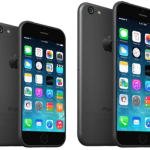
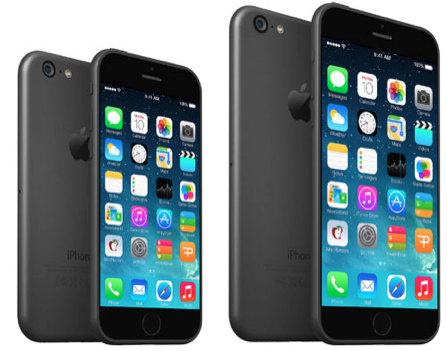 The larger screen size will also increase resolution, for example, which will deliver far higher definition and improved graphics to users. This will be well received by consumers who like to view a diverse range of media through the smartphone, whether they choose to stream movies or access mobile and online casinos like Euro Palace. There has also been the suggestion that Apple’s latest handset will feature thinner hardware, which in turn will lend itself to a sleeker and slim line aesthetic design.
In terms of performance, the iPhone 6 is also expected to be released alongside a newly updated operating system. This will be the iOS 8, and it will feature a number of updates that should increase processing speeds and allow for faster download times. Apple are also expected to launch a brand new fitness focused application to celebrate the launch of the handset, and the tentatively titled ‘Healthbook’ is already drawing considerable attention through online forums and websites.
Further Details and Speculation
On a final note, KGI’s analyst Ming-Chi Kuo has raised a potential anomaly with regards to the size of the iPhone 6 and its display. More specifically, he has suggested that Apple will release two unique devices, one during September as initially scheduled and another at some point during the fourth financial quarter.
The larger screen size will also increase resolution, for example, which will deliver far higher definition and improved graphics to users. This will be well received by consumers who like to view a diverse range of media through the smartphone, whether they choose to stream movies or access mobile and online casinos like Euro Palace. There has also been the suggestion that Apple’s latest handset will feature thinner hardware, which in turn will lend itself to a sleeker and slim line aesthetic design.
In terms of performance, the iPhone 6 is also expected to be released alongside a newly updated operating system. This will be the iOS 8, and it will feature a number of updates that should increase processing speeds and allow for faster download times. Apple are also expected to launch a brand new fitness focused application to celebrate the launch of the handset, and the tentatively titled ‘Healthbook’ is already drawing considerable attention through online forums and websites.
Further Details and Speculation
On a final note, KGI’s analyst Ming-Chi Kuo has raised a potential anomaly with regards to the size of the iPhone 6 and its display. More specifically, he has suggested that Apple will release two unique devices, one during September as initially scheduled and another at some point during the fourth financial quarter.
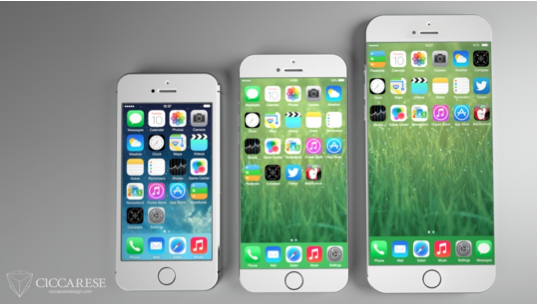 Ming-Chi Kuo suggests that while the former will feature a relatively small 4.7 inch screen, the latter will boast a display that measures 5.5 inches. This opinion is at odds with the suggestion that Apple have struggled to locate adequate batteries to power a potentially larger device, however, so the brand may well content themselves with the release of a single, block busting product.
While we will not know the true specification of the iPhone 6 until the summer, its potential design is at least beginning to take shape. This should be enough for now, especially as there remain a host of alternative handsets on the market that are creating a significant international impact.
Ming-Chi Kuo suggests that while the former will feature a relatively small 4.7 inch screen, the latter will boast a display that measures 5.5 inches. This opinion is at odds with the suggestion that Apple have struggled to locate adequate batteries to power a potentially larger device, however, so the brand may well content themselves with the release of a single, block busting product.
While we will not know the true specification of the iPhone 6 until the summer, its potential design is at least beginning to take shape. This should be enough for now, especially as there remain a host of alternative handsets on the market that are creating a significant international impact.
Smartphones inspire Mercedes Benz to shoot ahead of BMW 15 Jan 2014 6:52 AM (11 years ago)
Tablet-like and mobile computing technology is set to reach new levels as Mercedes-Benz announces the addition of touchpad technology to the C-Class sedan in a bid to surpass fellow German manufacturer BMW in sales.
The technology will be pioneered by the iPhone and an iPad-like device and will be part of the selection of high-end technology in the car which includes a 360-degree camera and six radar sensors.
The C-Class sedan was unveiled at the North American International Auto Show in Detroit on Sunday. The event marked the first time in seven years that the model has been overhauled. Car fundies and betting pundits will be taking their bets live on http://jackgold.com on who is going to podium position between these two German giants.
The upgraded model has been called “much more exciting” by automotive authorities. “Luxury customers are becoming much younger, especially in Asian markets,” said Sarwant Singh, an automotive partner with consultancy Frost & Sullivan in London. “They are looking for more gimmicks.”
And it’s these gimmicks that Mercedes-Benz is hoping will win over buyers. The company has been fighting back after losing its ranking as the top-selling luxury brand to BMW in 2005 and has since dropped to number three.
The new C-Class, which goes on sale in Europe in March and in the US and China in September, will help Mercedes overtake Audi sales next year, according to forecasts from IHS Automotive.
It is estimated that C-Class sales would surge 30 percent in 2015 from last year, a rise that could result in sales of more than 1.7 million vehicles next year – an increase of 17 percent.
Technology experts believe the introduction of the touchpad technology is simply a sign of things to come. Hi-tech options on the C-Class include a display that projects speed and navigation instructions on the windscreen to avoid distraction. The touchpad allows the driver to flip through functions or zoom in and out of maps or other images on the central display, which resembles a small tablet computer.
Why The iPhone 5c Won’t Sell More Than The 5s 18 Nov 2013 11:19 PM (11 years ago)
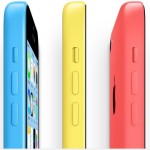
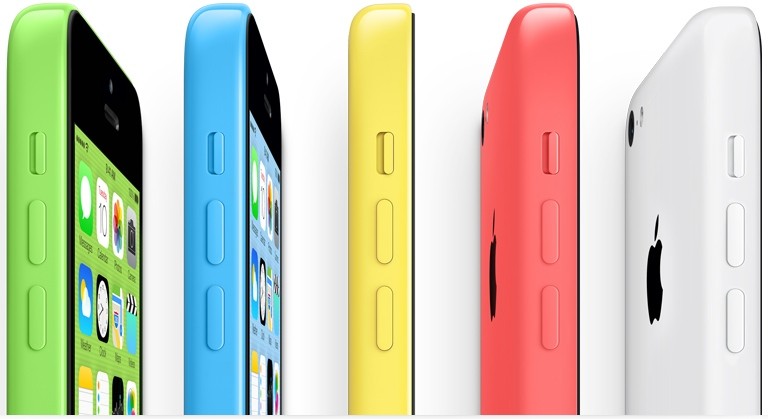
Beyond : Two Souls – Game (or Movie?) Review 20 Oct 2013 6:27 AM (12 years ago)



As the story moves ahead, the player will become emotionally invested in Jodie's character. This makes the gameplay all the more entertaining. In one of the scenes, Jodie attends her neighbour's party where she's shooed away and locked up. The control shifts to the supernatural being Aiden, who takes the revenge on her behalf. Objects can be displaced, characters can be made to feel uneasy, and various freaky things can be done. But all of it, eventually leads to the destruction of the house which is essential for the story to progress. The game creates the illusion of having multiple choices when there aren't any and is successful in concealing it.
The theme of fear and insecurity is brought up constantly. The surroundings, the emotions on Jodie's face, sound effects and almost every component seems to be contributing something to it. The special effects added to the game make the story appealing and relevant. A casual gamer is more likely to enjoy this game compared to a serious gamer. The plot is singular, the graphics are decent and the gameplay doesn't permit much freedom. The game has a 'co-op' mode which allows two players to play the game, but assigns each one a different character. Either Aiden or Jodie. So there isn't any multiplayer capability in the game. To wrap up, Beyond : Two Souls is a very different game. I'd give it a 7.5 - great plot, lack of interactivity, ellen page, realistic environment setups and an interesting climax.Bose introduces some new audio gear : QuietComfort 20 and the SoundLink Mini 9 Jun 2013 11:12 AM (12 years ago)
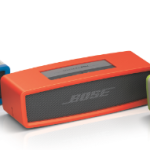
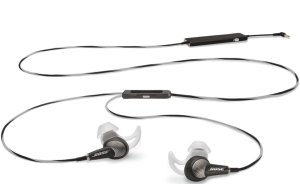 QuietComfort 20[/caption]
These earphones have everything that you would expect from an expensive product, a decent design and an amazing sound quality. We've had a hands-on with the earphones and we tried a variety of genres, from rock to the blues and we think that THIS PERFORMS. The product is meant to be used in environments that have an intense amount of background noise. The extent to which the the disturbances are suppressed is remarkable.
How does the noise cancellation work?
The Bose engineers have placed two tiny microphones in each ear bud; one senses the sound approaching, the other measures the sound inside. The measurements are sent to a digital electronic chip located on the control module which calculates an equal and opposite noise cancelation signal with in milliseconds. Bose uses its TriPort technology and its ports to increase the effective acoustic space and in turn to deliver improved audio performance.
Another impressive utility that has been added is the Aware mode. This feature enables you to listen to your music as well as your surroundings which could possibly be a friend speaking, a car honk or an announcement at the airport. Your music is adjusted so that it allows the required amount of background sound to come in.
It has a battery life of 16 hours but you could continue listening to your music without active noise cancellation for a little longer. You can find these in the market in September at the price of Rs 22,388.
The earphones have a peculiar design just made to fit perfectly in your ear. It has a stay here+ ear bud to support your earphone and prevent it from falling off.
The QuietComfort 20 also has the standard control cluster that works with Apple devices, Windows Phones, Android devices and BlackBerries.
The issue that we faced and you are likely to confront is that the aware mode is rendered useless when listening to music at louder volumes.
Next came the SoundLink Mini Bluetooth dock. At 680 grams, it weighs about half of what the SoundLink dock does. This dock is claimed to be scratch proof and fingerprint proof, and also has anodized aluminum frame. Our experience with the dock was fairly good. Switching the dock to high volumes did not affect the audio clarity or quality which is pretty good for a dock this small. And they come with colorful covers.
[caption id="attachment_6618" align="aligncenter" width="580"]
QuietComfort 20[/caption]
These earphones have everything that you would expect from an expensive product, a decent design and an amazing sound quality. We've had a hands-on with the earphones and we tried a variety of genres, from rock to the blues and we think that THIS PERFORMS. The product is meant to be used in environments that have an intense amount of background noise. The extent to which the the disturbances are suppressed is remarkable.
How does the noise cancellation work?
The Bose engineers have placed two tiny microphones in each ear bud; one senses the sound approaching, the other measures the sound inside. The measurements are sent to a digital electronic chip located on the control module which calculates an equal and opposite noise cancelation signal with in milliseconds. Bose uses its TriPort technology and its ports to increase the effective acoustic space and in turn to deliver improved audio performance.
Another impressive utility that has been added is the Aware mode. This feature enables you to listen to your music as well as your surroundings which could possibly be a friend speaking, a car honk or an announcement at the airport. Your music is adjusted so that it allows the required amount of background sound to come in.
It has a battery life of 16 hours but you could continue listening to your music without active noise cancellation for a little longer. You can find these in the market in September at the price of Rs 22,388.
The earphones have a peculiar design just made to fit perfectly in your ear. It has a stay here+ ear bud to support your earphone and prevent it from falling off.
The QuietComfort 20 also has the standard control cluster that works with Apple devices, Windows Phones, Android devices and BlackBerries.
The issue that we faced and you are likely to confront is that the aware mode is rendered useless when listening to music at louder volumes.
Next came the SoundLink Mini Bluetooth dock. At 680 grams, it weighs about half of what the SoundLink dock does. This dock is claimed to be scratch proof and fingerprint proof, and also has anodized aluminum frame. Our experience with the dock was fairly good. Switching the dock to high volumes did not affect the audio clarity or quality which is pretty good for a dock this small. And they come with colorful covers.
[caption id="attachment_6618" align="aligncenter" width="580"] The SoundLink Mini[/caption]
The dock is built in with 2 passive radiators and had custom built transducers, which allows twice the amount of air to flow making it capable of delivering low base as well as a large spectrum of notes perfectly. This mechanism is a hard one to replicate. Bose has an integrated it's custom DSP and is capable of storing up to 6 Bluetooth devices. It has a performance span of seven hours. SoundLink Mini will be available for Rs 16,200 in September.
Overall, the products are worth the premium price.
The SoundLink Mini[/caption]
The dock is built in with 2 passive radiators and had custom built transducers, which allows twice the amount of air to flow making it capable of delivering low base as well as a large spectrum of notes perfectly. This mechanism is a hard one to replicate. Bose has an integrated it's custom DSP and is capable of storing up to 6 Bluetooth devices. It has a performance span of seven hours. SoundLink Mini will be available for Rs 16,200 in September.
Overall, the products are worth the premium price.
Is HR Using Facebook in the Hiring Process? 25 Feb 2013 8:23 AM (12 years ago)
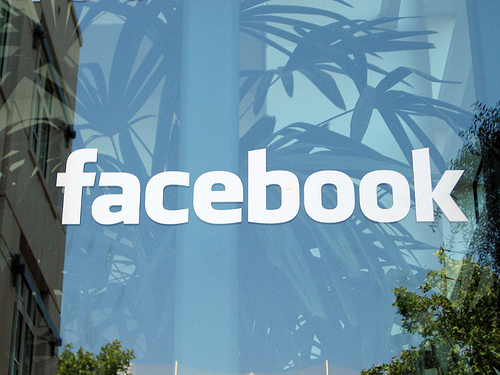
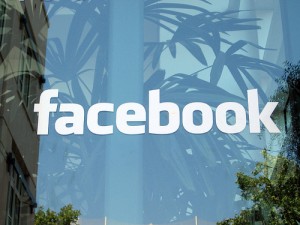 Facebook[/caption]
With the advent of Facebook and other social networks, human resources professionals have a new means of checking into potential employees. In addition to running a formal background check to look into criminal activity, the fact is that many employers are also utilizing Facebook during the hiring process. What can Facebook tell HR personnel about a potential employee? Depending on how much information is made public on the profile, Facebook can actually reveal quite a bit about an applicant.
How Often Does HR Use Facebook?
According to a study commissioned by CareerBuilder.com, nearly half of all HR representatives say that they use social networking sites to get more information about candidates. Even though LinkedIn is a social networking site created for the primary purpose of showcasing education and work background, HR is more likely to turn to Facebook to research someone before hiring him. They may even research someone before calling him in for an initial interview. Of course, an HR representative can only see the information that the candidate has chosen to make public on Facebook, which limits the amount of information that can be gathered in some situations.
Why Facebook?
While people are buttoned up, so to speak, during an interview and even on some websites -- Facebook is where many of them let their hair down. By checking into a Facebook profile, an employer can get a better sense of the candidate's true personality. For instance, someone who has a propensity for overreaction or complaining about his work is more likely to be transparent on Facebook than a site like LinkedIn where he expects colleagues to see what he writes. This gives an HR representative a window into what it might be like to work with the candidate if he is hired.
Getting Impressions
In a study published in the Journal of Applied Social Psychology in 2012, HR professionals were asked to rank college students based only on the information that was made public via their Facebook profiles. The HR representatives were specifically asked to rank the students in regards to their employability. For example, students who exhibited emotional stability and a curiosity about intellectual endeavors would receive a higher score. Six months later, after working with students, the same employers reported that the impressions they gathered from Facebook generally proved to be true. With data like this, it makes sense for employers to use Facebook to gather information about candidates before making an offer of employment.
As a job candidate, it's vital to consider one's Facebook profile before sending out applications. Facebook posts that reveal drug use or excessive drinking, a lot of personal conflict, or complain about another employer could mean that the candidate sabotages his own job offer. And, while it's illegal for an employer to use any religious beliefs or sexual orientation information they discover on Facebook against someone -- any impressions about overall personality and professionalism are fair game to be considered as a part of the hiring decision.
References:
Facebook[/caption]
With the advent of Facebook and other social networks, human resources professionals have a new means of checking into potential employees. In addition to running a formal background check to look into criminal activity, the fact is that many employers are also utilizing Facebook during the hiring process. What can Facebook tell HR personnel about a potential employee? Depending on how much information is made public on the profile, Facebook can actually reveal quite a bit about an applicant.
How Often Does HR Use Facebook?
According to a study commissioned by CareerBuilder.com, nearly half of all HR representatives say that they use social networking sites to get more information about candidates. Even though LinkedIn is a social networking site created for the primary purpose of showcasing education and work background, HR is more likely to turn to Facebook to research someone before hiring him. They may even research someone before calling him in for an initial interview. Of course, an HR representative can only see the information that the candidate has chosen to make public on Facebook, which limits the amount of information that can be gathered in some situations.
Why Facebook?
While people are buttoned up, so to speak, during an interview and even on some websites -- Facebook is where many of them let their hair down. By checking into a Facebook profile, an employer can get a better sense of the candidate's true personality. For instance, someone who has a propensity for overreaction or complaining about his work is more likely to be transparent on Facebook than a site like LinkedIn where he expects colleagues to see what he writes. This gives an HR representative a window into what it might be like to work with the candidate if he is hired.
Getting Impressions
In a study published in the Journal of Applied Social Psychology in 2012, HR professionals were asked to rank college students based only on the information that was made public via their Facebook profiles. The HR representatives were specifically asked to rank the students in regards to their employability. For example, students who exhibited emotional stability and a curiosity about intellectual endeavors would receive a higher score. Six months later, after working with students, the same employers reported that the impressions they gathered from Facebook generally proved to be true. With data like this, it makes sense for employers to use Facebook to gather information about candidates before making an offer of employment.
As a job candidate, it's vital to consider one's Facebook profile before sending out applications. Facebook posts that reveal drug use or excessive drinking, a lot of personal conflict, or complain about another employer could mean that the candidate sabotages his own job offer. And, while it's illegal for an employer to use any religious beliefs or sexual orientation information they discover on Facebook against someone -- any impressions about overall personality and professionalism are fair game to be considered as a part of the hiring decision.
References:
How to find a song name by lyrics, humming, beats or melody 20 Jan 2013 1:31 PM (12 years ago)
I’m sure, all of you have run into this tricky situation : You don’t know the song title, you just remember some musical element and you are desperately trying to figure out the song. I’m listing a few tools that will help you narrow down your search.
If you remember the lyrics…
You can try out my custom music search tool which searches the 9 best lyric websites for an exact match of your typed lyric. To restrict the search, type in your query within quotes (“). If you have any other data like the genre/artists/release-date, make sure you type it at the end of the search to make the results more relevant.
If you know how to sing it…
You can hum it or sing it on Midomi (through its website) and let it identify your song. The results are quite accurate if your microphone works fine and if you aren’t an extremely pathetic singer. Unlike Midomi, which is completely automated, you can use NameMyTune. This service allows users to record themselves, singing or humming a part of the song and then letting other users figure out the details. You can also listen to recordings of other users and identify their songs. After a match is reported, the uploader is emailed the details. A similar service is WatZatSong.
If you remember the beats or can tap to the tune…
The next best option to tap out your song on the keyboard is SongTapper and let it figure out your song. Although initially, when I tested the service to identify the songs I already knew, the results were not that great. Only after watching the video example did I get the tapping technique and get better results.
If you remember the melody…
MelodyCatcher will use your melody to fetch the song title. You can use it’s onscreen Java Applet to play the melody using a virtual keyboard or upload one through a “midi” file. If you have a keyboard plugged in, you can select that as the input for the on-screen keyboard and use it to play the melody. Musipedia has all of the above features along with a contour based search. To use melodic contour search, “all you need to know is whether the tune goes up, down, or if the pitch stays the same.”
If you have a part of the song…
Two dedicated mobile apps that can help you in your music identification quest are SoundHound and Shazam. Both function similarly : record a clip of your song (10-15 seconds) and search for a match in their database. These apps are available on all mobile platforms and are free. Apart from identifying tracks from the original versions, SoundHound is capable of recognizing any live event recording or humming or whistling of tune which Shazam cannot do. For those curious people who are wondering how services like these are able to convert music to some computer-readable data and store it, this paper will help you uncover the mystery.
If you still cannot find the song…
Forget the song and move on. It’s better than being unsatisfied about not being able to find the song name.
Everything about Facebook’s Graph Search : Searching yourself for answers 15 Jan 2013 1:34 PM (12 years ago)
Facebook introduced “Graph Search” at today’s press event. The idea isn’t new. Google has constantly been trying to display contextual search results with products like Google Now and Google Plus (Socially) integrated results. On top of that, users now demand exact results : things like Wolfram Alpha. Simply put, Graph Search is a search engine that searches “you and your connections” for the exact answers you want. The idea at the heart of this Facebook product : What ‘Apple’ may mean to an urban geek may not necessarily resemble the understanding of a farmer. How should the context be evaluated? This is where Facebook, with its massive user-base and activity data, comes in. The relevance of any “Graph Search Result” is cross-checked with your data – your likes, friends and their friends, location visits, tags and every public activity that Facebook can track. The conventional page-link search has outlived itself and probably, what Facebook calls, “Graph Search” is the future of discovering new data. To get a better idea, lets have a look at a few queries and their possible results in this new search engine –
- You’ve gone to San Francisco and you “checked in” to some place on Facebook (A way of notifying Facebook about your location). You search for “Restaurant’s nearby.” Pages of restaurants in SF near your current geographic location will appear and their ranking will purely be based upon your and your friend’s likes and visits. This could give Yelp a run for its money.
- You search for “Games friends from my school play” or “Music people in my city listen to” or “Friends who play table-tennis and work at my company.” Based solely on the information made “public”, your results will be delivered. Results will contain pages, profiles or photos.
- The Photo search is interesting. Text is manageable but how can you sort images? Graph search’s important use could be finding images by applying different parameters which make sense in social contexts. For example, this query : Photos of my marriage that my friends liked, shared and commented on. You cannot get them without actually checking every uploaded picture and tabulating the number of likes and shares. With one search, you have the best pictures (assuming that you consider your friend’s choices to be good).
- For queries like “The answer to life, universe and everything”, which I am not sure your friends would be aware of, Facebook will pull up results from Bing. (Incase you don’t know, the answer is 42.) It is a strategic partnership that will help Bing pull up its market share and at the same time, provide results to users, right on Facebook.
Search is a biiiiiiig market. Apple is chasing it with Siri, Google is exploiting whatever it can, Yahoo almost missed it and now, Facebook enters it (with the almost dead Bing) to model an engine completely around the user. Coming to the monetization part, Zuckerberg says “This could potentially be a business over time.” Hell yes, with businesses dying to take the top spots in such search results, it is a lot of money. The reason – results are ultrapersonal and carry with them, a recommendation from connections which is worth more than any creative advertisement. The conversion rates shall definitely be higher than those of the existing search results. People have already started asking stuff like “How can I improve my brands visibility in these results.” We have already had enough of SEO (Search Engine Optimization) and we might soon have GSE (Graph Search Optimization) techniques coming up. I’m sure, engineering a product like this would have been huge challenge. Understanding and processing the requests made in colloquial language is a problem. Scaling down the likes, comments, shares, visits, activity, etc to simple numbers to allow ranking is another tricky task. Right now, the product is in Beta and open to limited testing. You can join the waiting list to try out your luck.
Information Overload : Jack of all trades but master of none 5 Nov 2012 4:18 AM (12 years ago)
![]()
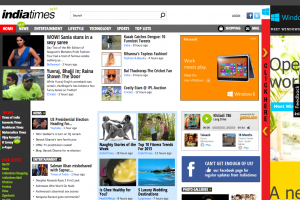 Death of Design[/caption]
The pages looks colorful with lot of pictures and good typefaces scattered, typically resembling some Red Light District stores, just begging and luring you to get in.
This defeats the purpose of technology, which was to scale down the time taken to make choices. Inundating information on the face of the reader might stun the poor guy but it is ultimately worthless. User time on site shoots up (which makes webmasters happy) but conversion rates droop down because the selection process consumes lot of brain power, something that people hate.
If you are still wondering why these websites get lot of traffic then you need to look at their sources. Its either Google or Links posted on Facebook, Twitter and other social mediums. The sources are hyper focused on one piece of content which sounds sensible. So why not adopt it and change the damn homepages? It's not about the feel the site gives but more importantly, about the process of discovering interesting information. Organization is the key.
Death of Design[/caption]
The pages looks colorful with lot of pictures and good typefaces scattered, typically resembling some Red Light District stores, just begging and luring you to get in.
This defeats the purpose of technology, which was to scale down the time taken to make choices. Inundating information on the face of the reader might stun the poor guy but it is ultimately worthless. User time on site shoots up (which makes webmasters happy) but conversion rates droop down because the selection process consumes lot of brain power, something that people hate.
If you are still wondering why these websites get lot of traffic then you need to look at their sources. Its either Google or Links posted on Facebook, Twitter and other social mediums. The sources are hyper focused on one piece of content which sounds sensible. So why not adopt it and change the damn homepages? It's not about the feel the site gives but more importantly, about the process of discovering interesting information. Organization is the key.
Where Inventors and Visionaries differ : Present and Future 6 Oct 2012 10:05 PM (13 years ago)
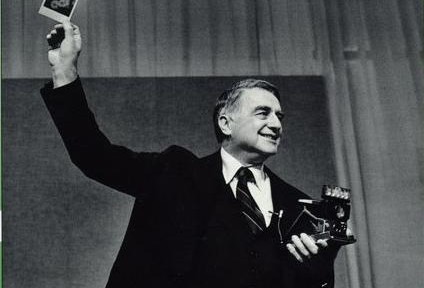
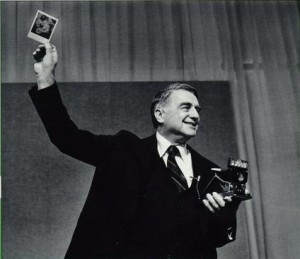
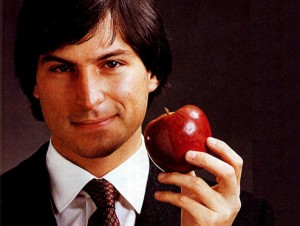 Ironically, he inspired one the visionaries of our times, Steve Jobs. He wasn't the inventor, he just knew what was to be done and he executed it perfectly. He filled up all the loopholes in Land's story.
He founded Apple with a team of inventors who were guided by him. He simply polished their work. Every product manufactured by Apple after Job's return to Apple was a hit. It's not just luck. Every idea seemed to invite the future and exploit everything Apple had (Ofcourse, until Apple felt it was ready for the public).
More than the products, he left a culture and culmination of methodologies which keep Apple alive today. He filled all the top ranks with his vision and hypnotized them into taking every decision with future in mind. Only the far-sight and foresight have allowed Apple to reach crazy financial benchmarks coupled with technological breakthroughs.
Jobs and Land are symbolic of those people who construct the future. Its difficult to spot someone with Scientific and Rational thinking of an Inventor combined with the creative and imaginative decision taking approaches but when these two come together, expect a good show.
Ironically, he inspired one the visionaries of our times, Steve Jobs. He wasn't the inventor, he just knew what was to be done and he executed it perfectly. He filled up all the loopholes in Land's story.
He founded Apple with a team of inventors who were guided by him. He simply polished their work. Every product manufactured by Apple after Job's return to Apple was a hit. It's not just luck. Every idea seemed to invite the future and exploit everything Apple had (Ofcourse, until Apple felt it was ready for the public).
More than the products, he left a culture and culmination of methodologies which keep Apple alive today. He filled all the top ranks with his vision and hypnotized them into taking every decision with future in mind. Only the far-sight and foresight have allowed Apple to reach crazy financial benchmarks coupled with technological breakthroughs.
Jobs and Land are symbolic of those people who construct the future. Its difficult to spot someone with Scientific and Rational thinking of an Inventor combined with the creative and imaginative decision taking approaches but when these two come together, expect a good show.